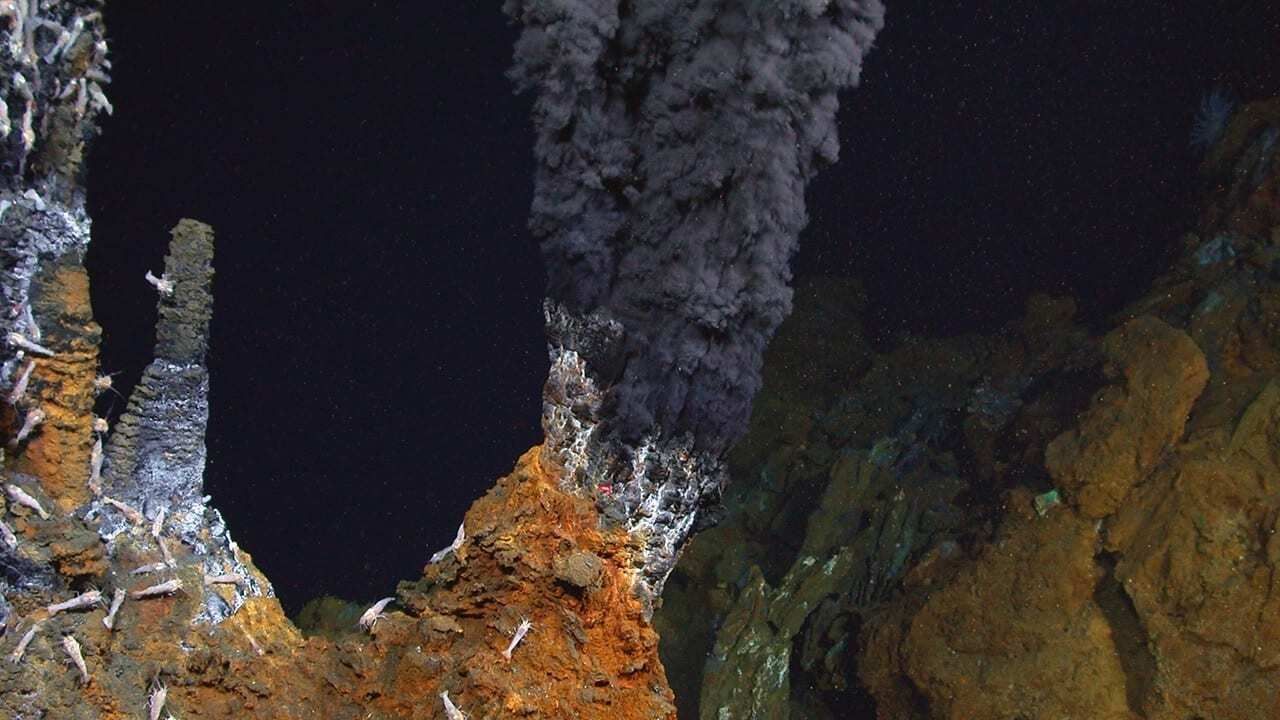
Hydrothermal vents are one of the ocean's most mysterious and fascinating features. Found deep on the ocean floor, these vents spew superheated water rich in minerals. But what exactly are hydrothermal vents? They are cracks in the Earth's surface where geothermally heated water escapes. These vents create unique ecosystems, home to creatures that thrive in extreme conditions. Unlike most life on Earth, which relies on sunlight, organisms here depend on chemicals like hydrogen sulfide. This process, called chemosynthesis, supports a diverse range of life forms. From giant tube worms to unique bacteria, hydrothermal vents are a hotbed of biological activity.
Key Takeaways:
- Hydrothermal vents are like underwater geysers, spewing hot, mineral-rich water from beneath the ocean floor. They create unique ecosystems and play a crucial role in regulating the chemistry of the ocean.
- Studying hydrothermal vents helps scientists understand the origins of life on Earth and their unique minerals have potential applications in biotechnology and medicine. However, they face threats from deep-sea mining and climate change.
What Are Hydrothermal Vents?
Hydrothermal vents are fascinating geological formations found on the ocean floor. These vents are like underwater geysers, spewing hot, mineral-rich water from beneath the Earth's crust. Let's dive into some intriguing facts about these unique underwater features.
- Hydrothermal vents are typically found along mid-ocean ridges, where tectonic plates are moving apart.
- The water emitted from these vents can reach temperatures of up to 400°C (752°F).
- Despite the extreme heat, the water doesn't boil due to the immense pressure at the ocean floor.
- These vents were first discovered in 1977 by scientists exploring the Galápagos Rift.
- Hydrothermal vents create unique ecosystems, home to organisms that thrive in extreme conditions.
The Science Behind Hydrothermal Vents
Understanding the science of hydrothermal vents helps us appreciate their role in Earth's geology and biology. Here are some key scientific facts about these underwater marvels.
- Hydrothermal vents form when seawater seeps into the Earth's crust, gets heated by magma, and then rises back to the surface.
- The mineral-rich water from these vents creates chimneys, also known as "black smokers" and "white smokers," depending on the minerals present.
- Black smokers emit dark, sulfur-rich minerals, while white smokers release lighter-colored minerals like barium, calcium, and silicon.
- The minerals deposited by hydrothermal vents can form massive sulfide deposits, which are rich in metals like copper, zinc, and gold.
- Hydrothermal vents play a crucial role in regulating the chemistry of the ocean.
Life Around Hydrothermal Vents
The ecosystems around hydrothermal vents are some of the most unique on Earth. Let's explore the incredible life forms that call these vents home.
- Hydrothermal vent ecosystems are based on chemosynthesis, where bacteria convert chemicals from the vent water into energy.
- Giant tube worms, which can grow up to 8 feet long, are one of the most iconic species found near hydrothermal vents.
- Other organisms include vent crabs, vent shrimp, and various species of fish and mollusks.
- Many of these organisms have symbiotic relationships with chemosynthetic bacteria, which provide them with nutrients.
- Hydrothermal vent communities are often isolated from each other, leading to high levels of endemism (species found nowhere else).
The Importance of Hydrothermal Vents
Hydrothermal vents are not just fascinating; they are also incredibly important for scientific research and our understanding of Earth's processes.
- Studying hydrothermal vents helps scientists understand the origins of life on Earth, as these environments may resemble early Earth conditions.
- Hydrothermal vents are natural laboratories for studying extreme environments and the limits of life.
- The unique minerals and compounds found at these vents have potential applications in biotechnology and medicine.
- Hydrothermal vents influence global ocean circulation and nutrient distribution.
- They also play a role in the carbon cycle, affecting the Earth's climate.
Threats to Hydrothermal Vents
Despite their remote locations, hydrothermal vents face several threats from human activities. Here are some of the challenges these ecosystems encounter.
- Deep-sea mining for minerals can destroy hydrothermal vent habitats and the unique species that live there.
- Climate change and ocean acidification may alter the delicate balance of these ecosystems, impacting the organisms that depend on them.
The Wonders of Hydrothermal Vents
Hydrothermal vents are truly fascinating. These underwater geysers, found in the deep ocean, host unique ecosystems. They spew superheated water rich in minerals, creating a haven for unusual life forms. Giant tube worms, blind shrimp, and other creatures thrive in these extreme conditions. The vents also play a role in regulating ocean chemistry and supporting the global carbon cycle.
Scientists continue to study these vents to understand more about Earth's geology and the origins of life. The extreme conditions at hydrothermal vents provide clues about how life might exist on other planets.
Exploring hydrothermal vents not only expands our knowledge of marine biology but also offers potential for new biotechnologies. The enzymes from vent organisms could have applications in medicine and industry. Hydrothermal vents remind us of the incredible diversity and resilience of life on our planet.
Frequently Asked Questions
Was this page helpful?
Our commitment to delivering trustworthy and engaging content is at the heart of what we do. Each fact on our site is contributed by real users like you, bringing a wealth of diverse insights and information. To ensure the highest standards of accuracy and reliability, our dedicated editors meticulously review each submission. This process guarantees that the facts we share are not only fascinating but also credible. Trust in our commitment to quality and authenticity as you explore and learn with us.
